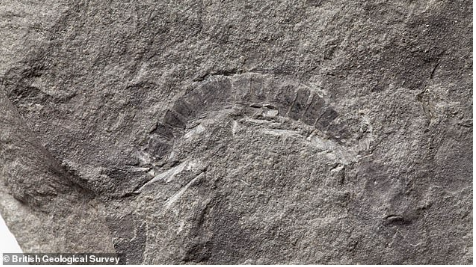
By carefully removing zircons—a small mineral required to precisely date the fossils—researchers were able to verify that the millipede is 75 million years younger than previously thought.
“It’s a big jump from these tiny guys to very complex forest communities, and in the scheme of things, it didn’t take that long,” stated Michael Brookfield, an adjunct professor at the University of Massachusetts Boston and research associate at the Jackson School of Geosciences at the University of Texas Austin.
“It appears that evolution is spreading quickly from these mountain valleys to the lowlands and then the rest of the world.”
Co-authors Elizabeth Catlos, a professor in the Jackson School’s Department of Geological Sciences, and Stephanie Suarez, a PhD candidate at the University of Houston, collaborated with study leader Brookfield. Together, they enhanced the study’s use of the fossil dating method.
After conducting an investigation, the researchers used a method known as molecular clock dating, which is based on the rate of mutation in DNA, to determine the age of the fossilized millipede. This resulted in an estimated age of 425 million years, or roughly 75 million years younger than the age that other scientists had calculated for the oldest millipede.
While it’s possible that older plant and bug fossils exist, Brookfield noted that the fact that they haven’t been found—even in deposits known to preserve delicate fossils from this era—may mean that the oldest known examples of these fossils are the ancient millipede and plant fossils.
If this idea is correct, scientists will be able to conclude that the rate of evolution of both plants and bugs was far faster than that suggested by the molecular clock. Insect deposits have been dated to a mere 20 million years after the fossils by prior research.
And 40 million years later, there is proof of flourishing forest populations full of insects, spiders, and towering trees.
Brookfield expressed astonishment that this work was the first to investigate the age of the ancient millipedes, given their possible evolutionary relevance.

According to Suarez, one explanation might be the challenge of removing zircons—a tiny mineral required to date the fossils precisely—from the ashy rock silt where the fossil was found. By removing the zircon grain from the silt, she enhanced the method.
The researchers claimed that retrieving zircons from the surrounding rock “involves an eagle-eye hunt,” but they were eventually retrieved using a pin attached to the tip of a pencil.
“That type of work prepared me for my work in Houston,” Suarez remarked. “This work is delicate.”
Using this method, she discovered that a separate millipede specimen, which was previously believed to be the oldest insect specimen, was actually roughly 14 million years younger than previously assumed. This finding cost the millipede specimen its title as the oldest bug. This research transfers the distinction to a fresh specimen using the same methodology.
